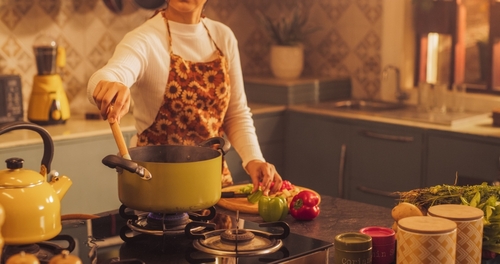Nothing connects us to a culture quite like food. There’s something about the flavors we love that can instantly transport us, whether it’s to a favorite holiday destination or the smells and tastes of home.
But getting the right ingredients to make your favorite dish isn’t always easy. If you’re travelling or have moved abroad to start a new life, finding authentic Indian spices and pantry items can be a challenge.
Luckily, cooking your favorite meals doesn’t have to be expensive or complicated. With a few simple ingredient swaps, you can replicate the flavors you love, anywhere in the world.
At Remitly, we’re all about exploring other cultures through food. In this guide, we’ll share smart ingredient substitutions that let you enjoy Indian food no matter where you live. From replacing asafoetida with your own mix of onion and garlic powder to swapping jaggery for molasses, you’ll see how a few small changes can keep big flavors on your table.
Why Indian cooking can feel overwhelming (but doesn’t have to be)
India is a huge country, home to dozens of different languages and cultures, and that cultural richness is part of what makes Indian cuisine so spectacular. From the creamy butter chicken of Punjab to the tangy, coconut-rich sambar of Tamil Nadu, Indian cuisine is a sensory feast with so many flavors and styles that it can feel overwhelming.
But it doesn’t have to be. While the variety of spices, oils, and seasonings can seem like a lot to take in, learning a few basic principles of Indian cuisine will take you far.
Having grown up in the UK, where Indian food is just about everywhere, I’ve gotten used to being able to find fresh curry leaves or Kashmiri chilis in most grocery stores. But outside of India, or areas with large South Asian communities, authentic ingredients for classic Indian cooking can be harder to find.
The good news: a few smart substitutions can help you capture authentic flavors without the hassle.
Simple swaps for common hard-to-find Indian ingredients
1. Ghee
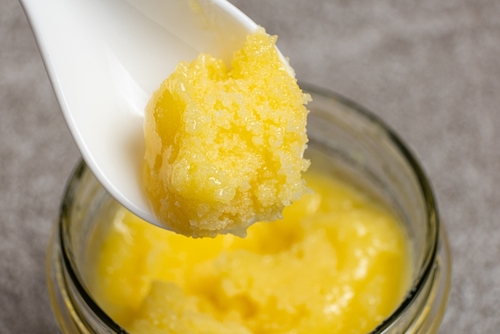
Ghee is the foundation of so many classic Indian dishes, with roots that go back thousands of years to the Vedic age. As well as being an important ingredient in cooking, it holds deep cultural and religious significance in Hindu traditions.
It’s often served alongside roti and used as a cooking oil for curries and dishes like biryani. With a smoke point higher than that of most vegetable oils, it also provides a richer flavor to any dish that uses it.
If you can’t get the real thing, you can swap it for unsalted butter. It won’t taste quite the same, but it will come pretty close. If you really miss the richness of ghee, you can also mix it with a little bit of olive oil to add some extra flavor.
If you’ve got time, you can even make your own ghee at home. Clarify butter by melting it at a low heat over the stove, skimming the foam off the top before straining the liquid butter into a storage container.
2. Garam masala
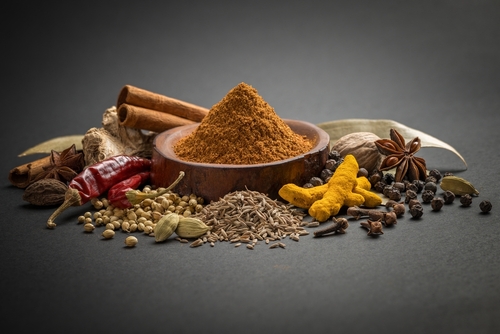
This warming spice blend is the backbone of famous Indian dishes like butter chicken, chana masala, and Rogan Josh. Usually added toward the end of the cooking process, it boosts the aroma and depth of anything you add it to.
If you can’t get garam masala, making your own at home is a great example of a practical Indian spice substitute that works beautifully in curries and dals.
Base ingredients:
- Coriander seeds
- Cumin seeds
- Green cardamoms
- Cloves
- Black peppercorns
- Cinnamon
If you want to put your own twist on the spice blend, you can also add:
- Bay leaves
- Star anise
- Fennel seeds
- Nutmeg
- Black cardamoms (if you can find them)
- Mace
How to make it: Gently roast the spices over a low heat until fragrant, being careful not to burn them. You’ll know they’re ready by the amazing smell. Then, grind the mix into a fine powder.
3. Curry leaves
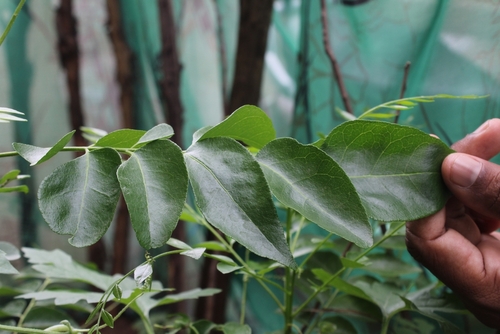
These fragrant leaves bring an unmistakable citrusy and slightly nutty flavor to many South Indian dishes. Often tempered in hot oil with mustard seeds, they add both brightness and depth to dals, chutneys, sambars, and curries.
If you have trouble finding curry leaves, look for kaffir lime leaves or even lime zest. This can give your dishes that fragrant and zesty tang without the need for traditional curry leaves.
4. Tamarind paste
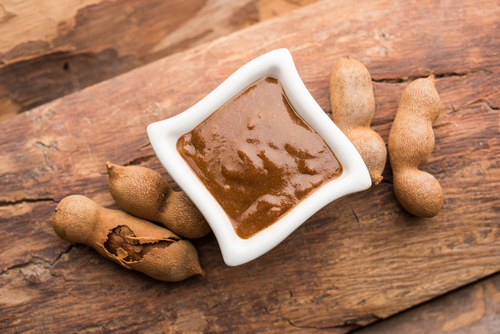
This is one I’ve recently discovered myself, because no grocery stores near where I currently live stock tamarind paste. But what is a sambar or chutney without it? That fruity sourness helps to balance the heat of the spices in your dish and can really bring a meal to life.
To replace it, mix lime juice with a little brown sugar to give you that combination of tartness and sweetness. Pomegranate molasses can also stand in.
5. Kashmiri chili
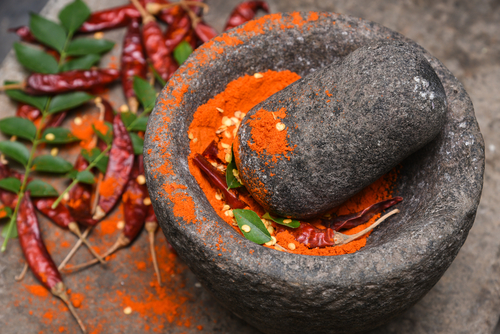
With its brilliant red color, Kashmiri chili powder is as important to the presentation of a dish as it is to its flavor. Your tandoori chicken or Paneer tikka just isn’t going to look the same without that vibrant hue, or taste as good without the gentle heat provided by this chili powder.
However, paprika is more readily available and will give you a similar beautiful color. To match the mild heat of Kashmiri chili powder, add a pinch of cayenne pepper.
6. Asafoetida

Pungent and savory, this spice, also known as hing, is often used in tempering to infuse oil with its unique umami flavor. If you can’t get it, a blend of onion and a touch of garlic powder will give you a similar result.
7. Jaggery
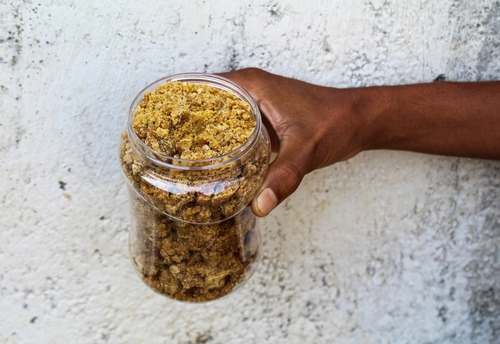
Jaggery is basically unrefined cane sugar, and it brings an almost caramel-like sweetness to chutneys and curries. It’s a great way to balance the heat of a spicy dish and add richness. When it’s not available, you can use brown sugar for sweetness and color, or add molasses to give you that extra depth.
How to stock a global pantry without breaking the bank
Even when authentic Indian ingredients are available, they’re often only sold in specialty stores or through online food suppliers, who can charge a healthy markup for their services.
By using a few smart substitutions and versatile staples, you can keep your pantry stocked to make just about anything without breaking the bank.
- Cumin seeds – these earthy and aromatic flavor bombs are not only perfect for tempering dals, but also amazing for elevating roasted vegetables or spicing up a soup.
- Turmeric powder – adds a beautiful golden color and warm undertone to your curries, and it can be amazing in smoothies too.
- Dried fenugreek leaves – bring a slight bitterness that works amazingly in creamy dishes like butter chicken.
- Mustard seeds – black or brown, they add a pop of flavor to pickles and roasted vegetables as well as curries.
Where to shop
iShopIndian, Patel Brothers Online, and even Amazon can all be great sources for these essential ingredients. Buying in bulk can also help keep costs down, so consider splitting an order with friends or family.
You could also try growing herbs like mint and cilantro at home. They’re easily grown in pots and will give you a fresh supply of flavorful ingredients whenever you need them.
Cooking tips for bringing authentic flavors to life
Great ingredients are just one side of the equation. Mastering these techniques is essential for learning how to cook Indian dishes with depth and aroma, even when you don’t have every traditional ingredient on hand. Here are some basic techniques to know:
- Tempering (tadka) – The process of heating spices like cumin and chilis in oil unlocks the essential oils and aroma, making a fragrant base for curries and dals.
- Blooming ground spices – After tempering whole spices in oil, add powdered spices like turmeric, coriander, and chili powder to ‘bloom’ them, deepening their color and aroma.
- Layering flavors – Marinating meat or paneer allows spices to soak into the food, adding complexity and depth. Slow cooking marinated ingredients makes them unbelievably flavorful.
Enjoy Indian food anywhere with ingredient swaps
Finding authentic ingredients for Indian cooking is easier than ever, but there are still lots of places that have never heard of garam masala or tamarind paste.
That doesn’t mean you have to go without. Part of the fun of cooking is experimenting, and the substitutions in this article can not only help you recreate authentic Indian food but also let you add a festive twist for Christmas or other celebrations.
Indian cuisine is one of the world’s great culinary traditions. With a few easy swaps, you can incorporate locally available ingredients to bring flavor and tradition alive wherever you are.
FAQs
Can these swaps be used in traditional Indian recipes?
Of course. Although purists might insist you can’t make a good butter chicken without ghee, cooking is as much an art as it is a science. These swaps let you capture what makes these dishes so great without having to rely on hard-to-source ingredients.
What if I can’t find specific spices, even for substitutes like garam masala?
Focus on basic spices that are available just about anywhere. Things like turmeric, cumin, and chili powder are easy to find, and they can add a burst of flavor to any dish. It might not be quite the same, but you can get close even with fairly basic seasonings.
Are these swaps healthy?
Many of them are! For example, swapping butter for ghee reduces the calories while still providing great flavor. Using lime juice and brown sugar instead of tamarind paste helps you cut out a lot of processed additives that come in ready-made sauce jars.
Where can I buy authentic Indian ingredients easily?
Online grocers like iShopIndian or subscription services specializing in Indian cooking kits offer convenient options shipped to your door.
